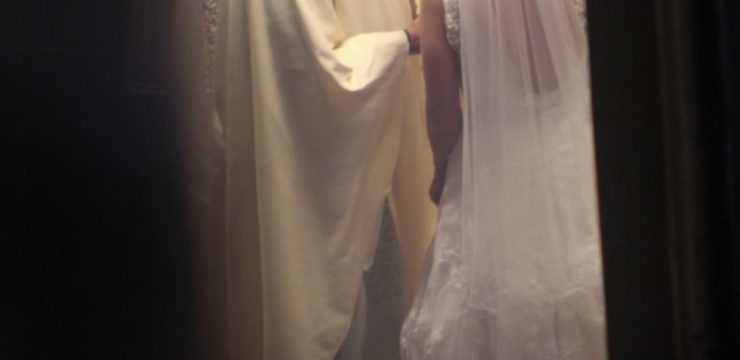Imagine a cold, pitch-black night. You grab a lantern, step outside, and trudge through the backyard because nature calls. But instead of a warm, modern bathroom, your only option is a tiny wooden shack standing in the dark. That’s right—we’re talking about the outhouse, a piece of history that once played a vital role in daily life but has now faded into obscurity.
Long before indoor plumbing made life convenient, the outhouse was a household necessity. Whether in homes, farms, or roadside stops, this little structure served as a crucial part of everyday existence. But how did this once-essential fixture go from being a must-have to a forgotten relic? Let’s take a trip back in time to explore the rise and fall of the outhouse.

The Outhouse: The King of the Backyard
Before pipes and flush toilets revolutionized sanitation, outhouses were the go-to solution for relieving oneself. These simple wooden structures dotted the landscapes of rural America, schoolyards, and dusty back roads. They were nothing fancy—just a small shed with a bench-style seat and a pit underneath. Some featured a single hole, while larger households had outhouses with two or three seats for efficiency.
Ever noticed the crescent moon on old outhouse doors? While it’s often thought to be a decorative touch, some historians believe it signified the women’s restroom, with a star marking the men’s. More practically, it also let in light and air—because, let’s be honest, ventilation was necessary.
For many, especially those in rural communities, using an outhouse was just part of daily life. But what was it really like to rely on one of these backyard necessities?
Life With an Outhouse: No Frills, Just Chills
Let’s not sugarcoat it—outhouses weren’t exactly luxurious. They were an upgrade from squatting in the woods, but they came with their own set of challenges.
Imagine waking up on a freezing winter night and realizing you need to use the bathroom. You’d have to bundle up, grab a lantern, and trudge through the snow just to answer nature’s call. Rain or shine, there was no avoiding the trip. And once inside? You might encounter some unexpected visitors—spiders, flies, and even the occasional snake lurking in the darkness.
Toilet paper wasn’t a thing back then, either. People used whatever was available—corn cobs, leaves, newspaper, or old catalog pages (hello, Sears Roebuck!). And if you think that sounds rough, just wait until you hear about the unfortunate souls who fell into the pit—a nightmare you never live down.
Despite the struggles, outhouses built character and created some unforgettable family stories. If you grew up with one, chances are you’ve got a few funny or downright terrifying memories to share.
Why Outhouses Disappeared: The Plumbing Revolution
So, what pushed outhouses into history books? The answer is simple—indoor plumbing.
By the early 1900s, cities started installing sewer systems and running water, making indoor bathrooms the new standard. Rural areas held onto their outhouses a bit longer—some farmhouses didn’t transition until the 1950s—but eventually, the convenience of indoor plumbing won out. A warm, well-lit bathroom inside the house? No contest.
Outhouses didn’t disappear overnight, though. Many remained as backups, storage sheds, or just forgotten relics rotting away in overgrown fields. But as progress marched forward, these little wooden structures slowly faded into history.
Where Can You Still Find an Outhouse Today?
Think outhouses are completely extinct? Not quite! While they’re no longer a common sight, you can still find them in a few unexpected places.
- Remote Cabins & Campsites – In areas where plumbing isn’t practical, outhouses still serve as the primary restroom option.
- National Parks & Trails – Ever used a pit toilet while hiking? That’s the modern-day cousin of the classic outhouse.
- Historic Homes & Museums – Some old homesteads keep outhouses on display as a glimpse into the past.
- Rustic Decor – Believe it or not, some people repurpose old outhouses as quirky garden sheds or vintage yard decorations.
So, while they’re no longer household essentials, outhouses still have their place—if only as a nostalgic nod to a simpler time.
Outhouse Lore: Tales, Pranks, and Laughs
For something as basic as a wooden shack with a hole in the ground, outhouses inspired plenty of folklore and practical jokes.
One of the most infamous pranks? Tipping an outhouse over while someone was inside—a stunt that caused sheer chaos and a whole lot of embarrassment. Another classic outhouse legend involves terrified kids too afraid to go outside alone at night, leading to creative solutions like chamber pots (or just holding it until morning).
And let’s not forget the unlucky folks who actually fell into the pit—disgusting, but a story guaranteed to be told at every family gathering for years to come.
A Symbol of Simpler Times
Outhouses may be relics of the past, but they’re also symbols of resilience and self-sufficiency. They remind us of a time when people made do with what they had, adapting to life without the luxuries we now take for granted.
Next time you’re on an old farm, hiking in the wilderness, or visiting a historical site, keep an eye out. You just might spot one of these old wooden shacks still standing, a quiet reminder of how much life has changed.
Could you survive in the outhouse era, or are you Team Modern Bathroom all the way?





